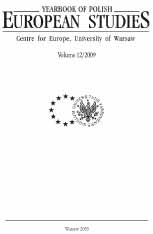European Union’s Cohesion after the Enlargement: a View from Central Europe
European Union’s Cohesion after the Enlargement: a View from Central Europe
Author(s): Rafał RiedelSubject(s): Politics / Political Sciences
Published by: Centrum Europejskie Uniwersytetu Warszawskiego
Summary/Abstract: This paper analyses the European Union’s Cohesion Policy under the 2007–2013 budgetary constraints as seen from the perspective of the new – Central European – member states. In the introduction, the author conceptualises the term ‘Central Europe’ pointing out the highly diverse and relative way of defining it, both in scholarly literature and in political discourse. Due to the fact that the accession of new states from Central Europe increased the regional disparities (measured in social and economic standards), the role of cohesion policy got strengthened, making its budget the largest part of total EU expenditures. Consequently the efficiency of the policy is put into consideration, including the methodology of evaluations, the criteria used, and objectives. In the concluding part of the paper it is emphasised that the EU Cohesion Policy has also served as a mechanism which promotes a more ‘human face’ of the European integration process, going beyond a simple ‘market friendship’ to include ambitions to build a political community based on solidarity foundations. It is the only EU policy that explicitly addresses the economic and social inequalities within the European territory.
Journal: Yearbook of Polish European Studies
- Issue Year: 2009
- Issue No: 12
- Page Range: 77-90
- Page Count: 14
- Language: English

